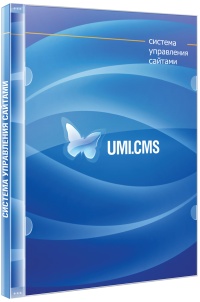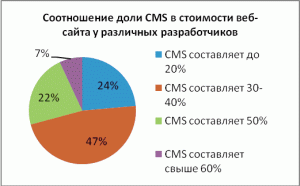UMI.CMS is now more than CMS
 The thought put in the heading by the red line passed through the presentation of the new version, which is gradually becoming more and more known as CMS from Umisoft . Last Wednesday, the press was shown version 2.5 of the UMI.CMS package, moreover, we must pay tribute, it was made interesting. My interest was warmed up the day before when I heard that “Umisoft will leave the CMS market”. What did that mean?
The thought put in the heading by the red line passed through the presentation of the new version, which is gradually becoming more and more known as CMS from Umisoft . Last Wednesday, the press was shown version 2.5 of the UMI.CMS package, moreover, we must pay tribute, it was made interesting. My interest was warmed up the day before when I heard that “Umisoft will leave the CMS market”. What did that mean? As it turned out, it meant that the basis for the development of its UMI system now lays a new concept - the "site operating system" ( SOS ), which should be something easily extensible, complemented, administered and almost does not require developer intervention in its use by the user . And this, in turn, meant the following.
In the dispute between the supporters of “boxed” and “studio” CMS, the point of view has long been established that a ready-made CMS is much less flexible and it’s very difficult to adjust it to some specific needs of the site being created: you need to either finish it yourself, or wait for the developer to wait a long time will release the necessary addition. Hence the idea of UMI: to put the customer feedback process to such a level that their best practices for improving CMS are not wasted, and new features are introduced into the system as easily as possible.
If a client, having acquired a CMS and working with it in his project, decides that he initially lacks the functions invested in it, he now has an incentive to work for himself and others. If he considers his additions to the UMI system important, she is ready to offer him a partnership and include the module he created in future releases or make it available for download. At the same time, of course, the company is strongly interested in the fact that the module was distributed only through its website, centrally, and bring profit to it and its author. In this case, in special cases, Umisoft will not be against the free distribution of the supplement, if its author is fundamentally against the sale of his brainchild.
As a first step in this direction, CN-Software GeoIP module has been included in the new version of CMSand an SEO module based on the Site-Auditor program from "Ashmanov and Partners". Of course, also in version 2.5, other changes and additions were made that its users would probably appreciate.
The second important point of the presentation was the report “How much does a website cost in Russia and what do web developers earn?” According to the report, the trend is such that by the end of the year we can expect an increase in the number of offers in the price range from 90 to 150 thousand rubles and from 150 thousand to 500 thousand rubles. The growth of these segments will be carried out by reducing the supply volume, primarily in the cheaper segment from 30 to 90 thousand rubles. Thus, the increase in prices for website creation services is expected to more than double by mid-2009. Of course, low-cost offers will remain, but their share in the total mass will significantly decrease. This applies to Moscow and St. Petersburg. In the regions, the picture is similar, although there the corresponding prices need to be reduced by 2-3 times.
 It is also interesting to study the share of the cost of boxed CMS (1C-Bitrix, NetCat, HostCMS, ABO.CMS, Amiro, S. Builder and a number of others, without UMI.CMS) in the total cost of sites made on them. Having excluded the most expensive developers from the statistics, we are shown that a rather significant percentage of site builders invest quite a bit of their work in the final amount that they require from the customer. Using a 50% affiliate discount, many of them are practically engaged in reselling CMS, but at its retail price. In general, it makes no sense to deal with this, since such a “business model” ceases to be attractive as the web studio grows and the demand for more expensive sites increases, from which the customer expects to see some more investment.
It is also interesting to study the share of the cost of boxed CMS (1C-Bitrix, NetCat, HostCMS, ABO.CMS, Amiro, S. Builder and a number of others, without UMI.CMS) in the total cost of sites made on them. Having excluded the most expensive developers from the statistics, we are shown that a rather significant percentage of site builders invest quite a bit of their work in the final amount that they require from the customer. Using a 50% affiliate discount, many of them are practically engaged in reselling CMS, but at its retail price. In general, it makes no sense to deal with this, since such a “business model” ceases to be attractive as the web studio grows and the demand for more expensive sites increases, from which the customer expects to see some more investment.Here UMI sees a benefit for itself and its customers at a lower price for its CMS compared to its competitors, which allows it to maintain the cost of the site at the same level, while reducing the cost of CMS on average up to 25% of it.
I asked Mikhail Tokovinin, general director of QSOFT company, which, one might say, “ate a dog” to create sites on CMS “1C-Bitrix”, to comment on this data.
"The average percentage of the cost of CMS (of the cost of implementing the project) in the 1C-Bitrix affiliate network is 10%," says Mikhail, "Depending on the experience and qualifications of the partner, this indicator can vary from 1% to 50%."
On the indicators for UMI, Mikhail said that this company “so far is betting on the lower market not so much from the point of view of the consumer, but from the point of view of the partner (that is, their affiliate network consists of small studios). This is due to the fact that there is a Umistudio associated with them, that is, they themselves have not abandoned development and are unlikely to give a large project for implementation to a third-party developer. ”
The conclusions from all of this are obvious. Encountering strong opposition from web studios with a fairly strong development department, having their own CMS and generally not seeking to “put” all their projects on the same universal system, the manufacturers of “boxes” can only go to increase the flexibility of their products. What they, at least some, are already starting to do. To what extent this task is generally feasible, only time will tell.
